Ancient Roman medicine was contributed dramatically by the Hippocratic Corpus’s knowledge and the combination of regimen, treatment of diet, and surgical procedures.
It was most prominent in the works of two Greek physicians- Dioscorides, a Roman army physician, and Galen. They performed public demonstrations, practiced medicines, and recorded their findings in the Roman Empire.
Ancient Roman medicine had specializations like ophthalmology and urology. They increased their knowledge of the human body through various inventions of surgical procedures using forceps, scalpels, and catheters.
The Romans heavily practiced healing based on herbs, chants, prayers, and charms readily available in the household.
The Romans encouraged providing public health facilities throughout Rome and developed from the demands of the battlefield and lessons from the Greeks.
They adopted the theory of the four senses of humor from the Greeks, which remained popular in Europe till the seventeenth century.
What medicine did the ancient Roman use?
Content
The Romans performed surgeries using opium and scopolamine to relieve pain and acid vinegar of cleaning wounds. They carried a tool kit with arrow extractors, catheters, scalpels, and forceps, sterilized in boiling water before use.
What herbs were used as medicine by the Romans?
They used anise, basil, garlic, cumin, coriander, oregano, myrtle, wormwood, catnip, etc., as medicine.
How were wounds treated in ancient Rome?
Flesh wounds were treated by irrigation, antiseptics, herbal medication, surgeries, and bandages and dressings. The Roman army used field hospitals to increase the speed of treatment.
What did they call the Roman doctors?
They were called Asclepiades of Hippocrates. Fathers who were doctors themselves passed on these names to their sons for the continuation of their profession.
Influence of Greek medicine on ancient Roman medicine
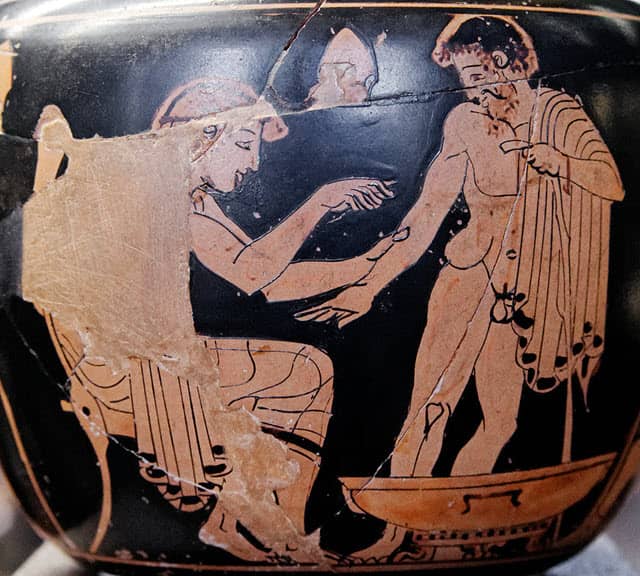
Source: Wikimedia Common
Greek medicine highly influenced Roman medicine. Like the Greek physicians, the Roman physicians depended on naturalistic observations rather than spiritual rituals, but not the absence of spiritual beliefs.
They believed famines and plagues were divine punishments, and satisfying the gods would end them. Later, the Romans formed a concept of contamination that started practices such as improved sanitation and quarantine.
Galen, one of the first well-known doctors in Rome, became an expert on human anatomy, in Greece, by dissecting animals, including monkeys. His expertise and significance in ancient Rome led him to become the personal physician of Emperor Marcus Aurelius.
Greek symbols and gods influenced Roman medicine. The caduceus, the treatment character, was initially associated with Hermes, the Greek god of commerce. He carried the caduceus, a staff wrapped with two snakes associated with the Roman god Mercury.
The construction of the temple of Apollo Medicus in 431 BCE in Rome with the recognition for having healing powers shows the establishment of the Greek doctors in Rome.
Archagathus of Sparta, the 1st medical practitioner of Ancient Greece in Rome, is known for bringing the use of ancient greek medical practices to Ancient Rome. He was an expert in treating asking problems and treating wounds caused during any battle or war.
Asclepiades of Bithynia was known for soft treatments that included gentle exercises, bathing, and massaging, which were sometimes prescribed along with wine and water.
General Roman medicine
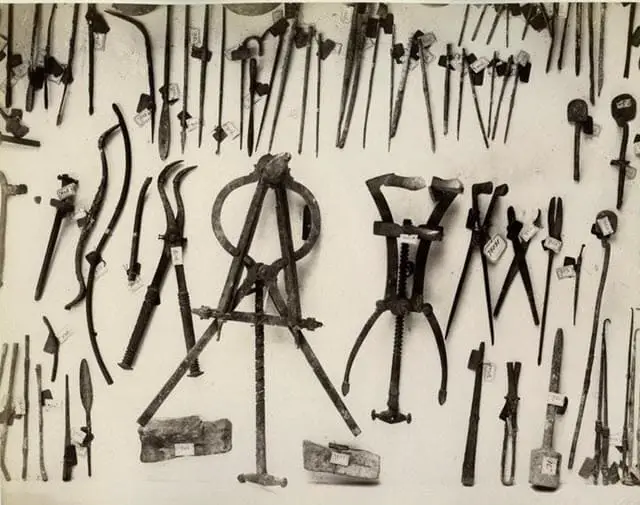
Source: Wikimedia Common
Materiamedica, one of the most impactful works of drug that Dioscorides of Anazarbus did, mentions both plant and herbal remedies. However, the most effective ones are the autumn crocus which contains colchicine, and poppy juice which contains morphine.
He also proposed that specific stones that have beneficial properties, such as green jasper, could be a perfect solution for stomach aches or any issues related to the stomach.
Likewise, wearing stones by any pregnant woman could help her in quick and easy delivery.
The pills and medicines were usually made from plants, herbs, and metallic ingredients. Celsus described the elements of a drug to treat cold and cough could be pepper, saffron, myrrh, cinnamon, costmary, castoreum, poppy tears and galbanum.
Cato believed cabbage helped indigestion, and using somebody’s urine for bathing would help constipation, especially the urine of a person who consumed a lot of cabbage.
Similarly, the fumes of boiled cabbage, if directed toward the woman’s womb, would increase her fertility.
Surgery was usually considered the last resort because of the apparent risks and the discomfort and pain it causes. They performed sophisticated operations such as removing cataracts, draining fluids, reversing circumcision, and trephination with the help of specialized surgical instruments.
The wounds after the surgery would be stitched using linen thread, flax, and metal pins, whereas the dressing was done using sponges soaked in oil, vinegar, or even wine.
The doctors dealt mainly with skin, digestion, fertility problems, bone fractures, gout, epilepsy, fluid retention, and depression.
The difficult cases such as injuries to the heart, brain, spine, kidneys, liver, arteries, and other delicate organs were usually avoided to protect their medical reputation as they acknowledged how they couldn’t do anything with those cases.
Progression of medicine
The first biologist and a great Greek philosopher, Aristotle, contributed much to medicine in ancient Rome and studied the world of living things. He laid the foundations of comparative anatomy and embryology.
After Aristotle, a famous medical school was established in 300 BCE during the reign of Alexandria.
Herophilus, whose thesis on anatomy was extraordinarily unique, and Erasistratus, considered the founder of physiology, were two of the best medical teachers in that school. Erasistratus distinguished the difference between sensory and motor nerves.
Asclepiades of Bithynia, contrary to the beliefs of Hippocrates, refused the healing power of nature and came up with the atomic theory.
The acknowledgment of disease to the contracted and relaxed condition of the solid particles is what he believed made up the body.
Asclepiades thought to restore harmony between the particles cured the disease. He used remedies such as massage, poultices, tonics, fresh air, and a corrective diet to achieve balance, gave attention to mental health, and differentiated between hallucination and delusion.
He released mentally unstable people from dark asylums and treated them with therapy, soothing music, soporifics- especially wine and exercises to improve attention and memory.
Galen acknowledged and followed the Hippocratic method and recognized that arteries contain blood, not air. He displayed how the heart sets the blood in motion but didn’t know that the blood circulates.
To his knowledge, he had to examine the animals, particularly apes, as dissecting the human body was illegal at that time.
Soranus of Ephesus wrote a book on childbirth, infant care, and women’s disease. He despised abortion and encouraged various contraceptive methods.
He also proposed a live-saving technique during childbirth that described a problematic delivery’s assistance by turning the fetus in a podalic version in the uterus.
The Romans set a great example in terms of public health. Along with unmatched water supply in the city, gymnasiums and public baths were built, and sewage disposal was adequate.
They built hospitals and provided the army with medical officers while the poor were appointed with general physicians.
Famous Specialists of ancient Roman medicine

Source: Wikimedia Common
Aulus Cornelius Celsus wrote an encyclopedia including a part on medicine that mentioned a mint-flavored perfumed steam bath would help sweat and rejuvenate the body.
It said eating snakes would help rid abscesses and that epilepsy could be sure by drinking the slain gladiator’s blood.
It also mentioned that plastering hot mallow root that was boiled in wine would treat gout, and the death of a person could be indicated by cold ears, hard forehead skin, sunken eyes and temples, and pointed nose.
He categorized food as those that cooled the body, especially vinegar, cherry, and cucumber, and food like salt, wine, pepper, and onion produced heat in the body.
Dalen, an all-rounder scholar, advised new mothers on applying bandages soaked in wine for sterilization. Galen suggested that the imbalance among the bodily fluids caused illnesses such as black bile, blood-related illness, and yellow bile.
The theory of cold, heat, dry, and wet that could be used in all treatments remained influential for more than 1500 years.
Hospitals in the ancient Rome
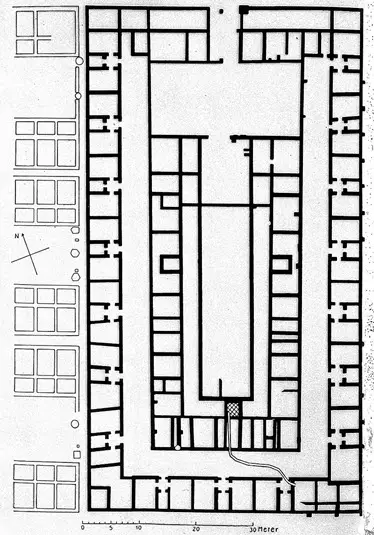
Source: Wikimedia Common
The first hospitals in ancient Rome were reserved for slaves and soldiers, and physicians followed armies and ships to assist in injuries.
Most deaths occurred due to poor sanitation, famine, epidemics, malnutrition, warfare, and health system development lagged due to superstitions and religious beliefs.
They built the earliest Roman hospitals during the reign of emperor Trajan in the 1st and 2nd centuries. Valentudinarium were field hospitals for wounded soldiers. Initially, it started in clusters of tents that helped doctors manage different wounds and various herbs required.
It was established when the army expanded beyond the Italian peninsula and couldn’t be cared for in private homes any longer. Over time, permanent facilities replaced these temporary forts.
A valetundinarium usually has a rectangular building with four wings, connected by an entrance hall used as a triage center.
The hospitals could accommodate around five thousand men, and there were a large hall, reception wars, dispensary, kitchen, staff quarters, and washing and restroom services.
Dreams as diagnostic methods
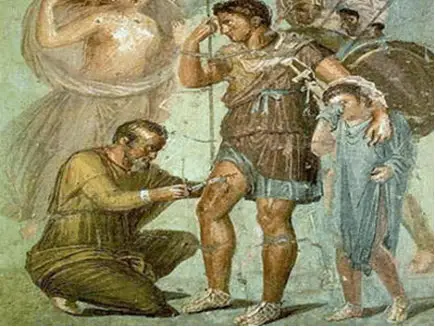
The interpretations of a patient’s dream were used to determine what treatment they received with the theme of knowing the patient.
They believed the physician should know essential aspects of the patient’s lives to understand how to treat them, including their climate, food intake, sleep quality and quantity, how much they drink, and any injuries.
They made conclusions to determine what needed to be done to set them back to equilibrium.
They believed that the soul served the purpose the brain has been discovered to do, so they took dreams into reference during diagnosis.
They thought the soul was responsible for sensation, pain, motion, and other physiological concepts and continued these works even when asleep. Hence, dreams show what caused the person distress.
They believed a person was healthy and in equilibrium if the dreams consisted of everyday daily events. However, the more chaotic the dreams, the more ill the person was thought to be.
Major health issues in the ancient Rome
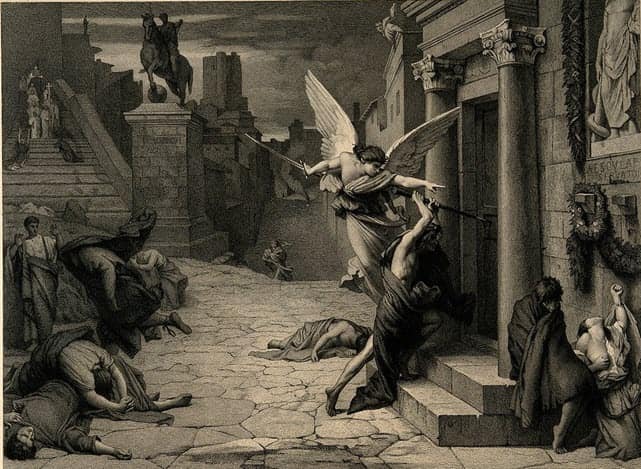
Source: Wikimedia Common
The average lifespan of the Roman people was 22 years. Children were not considered human up to the talking age since most children died before 12 months, and only 1.3 percent had tombstones in their burial.
The most common diseases in ancient Rome were Malaria and tuberculosis. People were dying tremendously as mosquito-breeding marshes surrounded many Roman cities.
People resolved to raven caws and decapitating puppies as a desperate method for cures and magic as malaria swept off the extensive Roman Empire. Tuberculosis, however, had been present since the birth of history and was called the silent killer.
Romans claimed lead poisoning to be the reason for high sterility rates, miscarriages, and stillbirths. The source of lead ingestion was lead water pipes and wine additives.
Cancer was another health issue faced by the Romans, which according to the Hippocratic Corpus, was caused by excess black bile and was termed Carcinos (crab) as some cancers appeared crab-like.
Plague, brucellosis, wheat allergy, and sexually transmitted diseases like syphilis were some other diseases prevalent in the city.
Conclusion
The Romans were highly influenced by the Greeks on medicine and added their methods by focusing on public health and disease prevention.
Like Greece, there was no medical training or qualifications among the Romans, and forms of practice depended on the individual learning of the practitioner and through accuracy of his diagnosis.
They progressed in their anatomical knowledge and surgery; however, it was still highly flawed in application.
They were highly superstitious and religious and thus, believed that a person was diseased due to offending the gods and that only by satisfying the gods would they be cured.
They were heavily operative with herbal treatments and identified many plants associated with curing various diseases. Surgery was considered the last option due to the discomfort it caused and the risk it carried.
However, they carried out sophisticated operations such as removing cataracts, draining fluids, trephination, and reversal of circumcision with the help of specialized surgical instruments.
